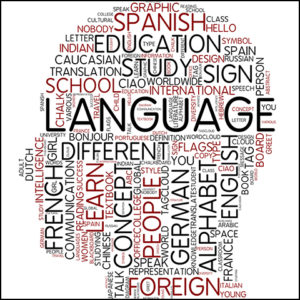
MAYA, LANGUAGE & DIVISION
There are many interpretations of this term in Hinduism & Buddhism, this is one interpretation. Let’s begin with a quote from the Upanishads, some of the earliest Indian writings – available on Stephen Batchelor’s website:
“All this was then undifferentiated. It got differentiated by name and form, so that one could say: ‘He is so and so, and has such and such a form.’ […] But] as the flowing rivers disappear into the sea, losing their name and form, so a wise man, [is] freed from name and form…’”
All phenomena exist in process, interdependent, impermanent and empty of self-existence. All entities are transient, subject to change and transformation. Things grow and decay, they are born and they die – they emerge and they merge one into another. This is one of the key insights of the Buddha – who observed these processes happening all around, and within, him.
In order to talk about, think about and analyse the world we develop a set of conventions in the form of words, numbers and symbols. But these languages, by their very nature, are divisive and dualistic – breaking up the world into separate things or objects that are named and categorised in ways that vary from language to language, and from one culture to another. In order for languages to work, it seems, the world has to be considered as a collection of separate entities, each with its own fixed nameable essence. We construct a linguistic lens or abstract framework, bound by grammatical conventions, through which we come to see, think about and manipulate the world around us. We talk about fluid processes as if they were separate things. The construction of abstract languages is indicative of our desire for permanence and fixity where there is none.
We apply these abstract languages to ourselves – talking and thinking about ourselves as if we are separate from the world, divided into compartments – such as, mind, body, feelings, thoughts, memories, ego, id, brain and bone – even though we know these things are all interdependent, everchanging and, often, interwoven. This linguistic or conventional self is real as a convention or linguistic construct, but it is not who we are. To consider the linguistic self as being who we are is to be deluded (avidya) – to mistake fiction for fact, or a mirage for an actual oasis. Believing in this construction of conventions, names, words and numbers, is to lose touch with the transient, interwoven and interdependent actual world, in favour of the world of divisions, words and numbers – we mistake the drawing or plan of a house for the house itself; or mistake the map for the land it represents. A gap opens between how the world IS, and how we talk and think about it. We experience dissatisfaction, disharmony and suffering (dukkha), because we are out of step with the way the world IS (dharma) and the way we ARE.
In Indian philosophy there is a term, maya, that is useful in thinking about these matters. Maya, is often translated as ‘illusion’, but the word is derived from the Sanskrit root, matr, ‘to measure, form, build, or lay out a plan’ – from which we get the words metre, matrix, material and matter. So maya denotes the process of classification, categorisation, division – the use of language and number. Maya, consists of the naming (nama) of forms (rupa). This is not to say that the naming of forms and division and classification aren’t useful or delightful – there would be no science, philosophy, literature, song and poetry if we did not – but to mistake these abstract structures for the ever-changing processes they symbolise and represent is problematic. To do this is to cling to shadows and reflections, to become attached to abstractions, because they offer the solace of fixity and enduring boundaries. To mistake the reflection in a pond for the moon in the sky is to be deluded. To try to grasp the moon’s reflection, is to be endlessly frustrated and dissatisfied – this is unnecessary suffering.
The forces of division latent within language (verbal and non-verbal) can take on a momentum that leads to misunderstanding and conflict. The either/or, yes/no, good/bad tendencies within language structures can lead us to thoughtless and habitual judgments and generalisations. Through the action of karma (cause and effect) words and gestures can generate reactive behaviours such as anger, intolerance and division. Being mindful of the effects of our use of language and gesture can help us to minimise harm and to maximise understanding, clarity and friendship. If we are mindful, we can counteract the divisive tendencies in words, signs and symbols and the narratives they carry, and use them instead to bind, to share understanding, and to offer friendship and care.
NB. In Greek scepticism – the term, aphasia, is used to describe freedom from domination by linguistic (and numerical) discourses. An interesting parallel!
